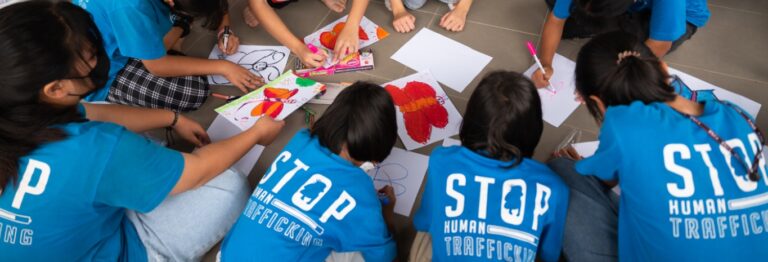This is a 3-part series. If you missed them, click here for Part 1 and Part 2.
People in the communities with which we work are already beginning to see the impacts of climate change and the instability it brings to their lives. Though they live close to the earth and its natural resources and their communities have contributed relatively little to the causes of climate change, they are among the first to become most vulnerable to extreme weather events.
It’s a pattern seen globally–that those who’ve contributed least will be most vulnerable. Yet their voices are often ignored when it comes to decision-making and solutions. It’s more than an issue of fairness, though. If we ignore their perspective and how climate change impacts them, we run the risk of compounding harms: extreme weather events, food scarcity, poverty, lack of access to resources, exploitation, and potentially worse if they try to migrate to escape, as we’ve already seen.
“And rather than recognizing that we owe a debt to migrants forced to flee their lands as a result of our actions (and inactions), our governments will build ever more high-tech fortresses and adopt even more draconian anti-immigration laws.” – Naomi Klein
The Deep Link Between Climate Change and Trafficking
The first step is recognizing the tight relationship between climate change and trafficking. We’ve focused on the pathway by which people vulnerable to climate change become at risk for trafficking and labor or sexual exploitation. However, the reverse is also true. Modern slavery is the world’s third-largest carbon emitter, involves practices like deforestation and highly polluting shrimp harvesting. There is an important link between industries that are destructive to natural resources and also destructive for human lives and well-being. “If slavery were a country, it would only be medium-sized, with the population of Algeria and the gross domestic product of Bulgaria, yet it would be the third-largest carbon emitter — at 2.54 billion tons — after China and the U.S.” Meanwhile, forced labor is found even in the supply chain of green technologies. (Source: Devex)
Combatting these issues, therefore, requires an understanding of how deeply they connect and exacerbate other societal problems.
“The climate crisis is not gender neutral. Climate change is a powerful ‘threat multiplier,’ making existing vulnerabilities and injustices worse. Especially under conditions of poverty, women and girls face greater risk of displacement or death from extreme weather disasters. Early marriage and sex work–sometimes last-resort survival strategies–have been tied to droughts and floods. There is growing proof of the link between climate change and gender-based violence, including sexual assault, domestic abuse, and forced prostitution.” – Johnson and Wilkinson, eds., All We Can Save
Bringing the Most Vulnerable into Empowerment
Beyond protecting the vulnerable, the next critical step is to actually tap into the potential wisdom and leadership power of those who are on the front lines of climate change–especially women and Indigenous people.
There is growing recognition that their experience can provide insight into better, more sustainable practices, and they have a unique authority to mobilize local change. “Given their dependence and proximity to natural resources, women at the local level are ‘not only well suited to find solutions to prevent environmental degradation and adapt to a changing climate, they have a vested interest in doing so.’ Women play a critical role in their local communities as they mobilize to adapt to climate change and preserve natural resources. There is ample evidence that suggests this leads to better outcomes in terms of conservation and sustainability.” (Source: Smith, Olosky & Fernandez, 2021, “The Climate-Gender-Conflict Nexus,” Georgetown Institute for Women, Peace and Security)
It’s not just about extending generosity to the most vulnerable; it’s about seeing their perspective as a vital and vibrant part of our collective best interests.
Holistic Solutions
By bringing the voices of the most vulnerable into our collective decision-making, we stand a better chance of seeing how these problems stem from similar forces. The systemic forces that exploit people are the same ones that perpetuate the destruction of our natural resources. Conversely, the solutions that support equity may also support our collective survival.
Confronting the problems in a holistic way, then, means not only promoting technocratic solutions to reduce and mitigate climate change. It also means promoting socio-political solutions that protect the rights of those most vulnerable. It means providing resources to mitigate the effects of climate change locally, supporting global education and empowerment, and promoting border policies that recognize the plight of climate refugees.



